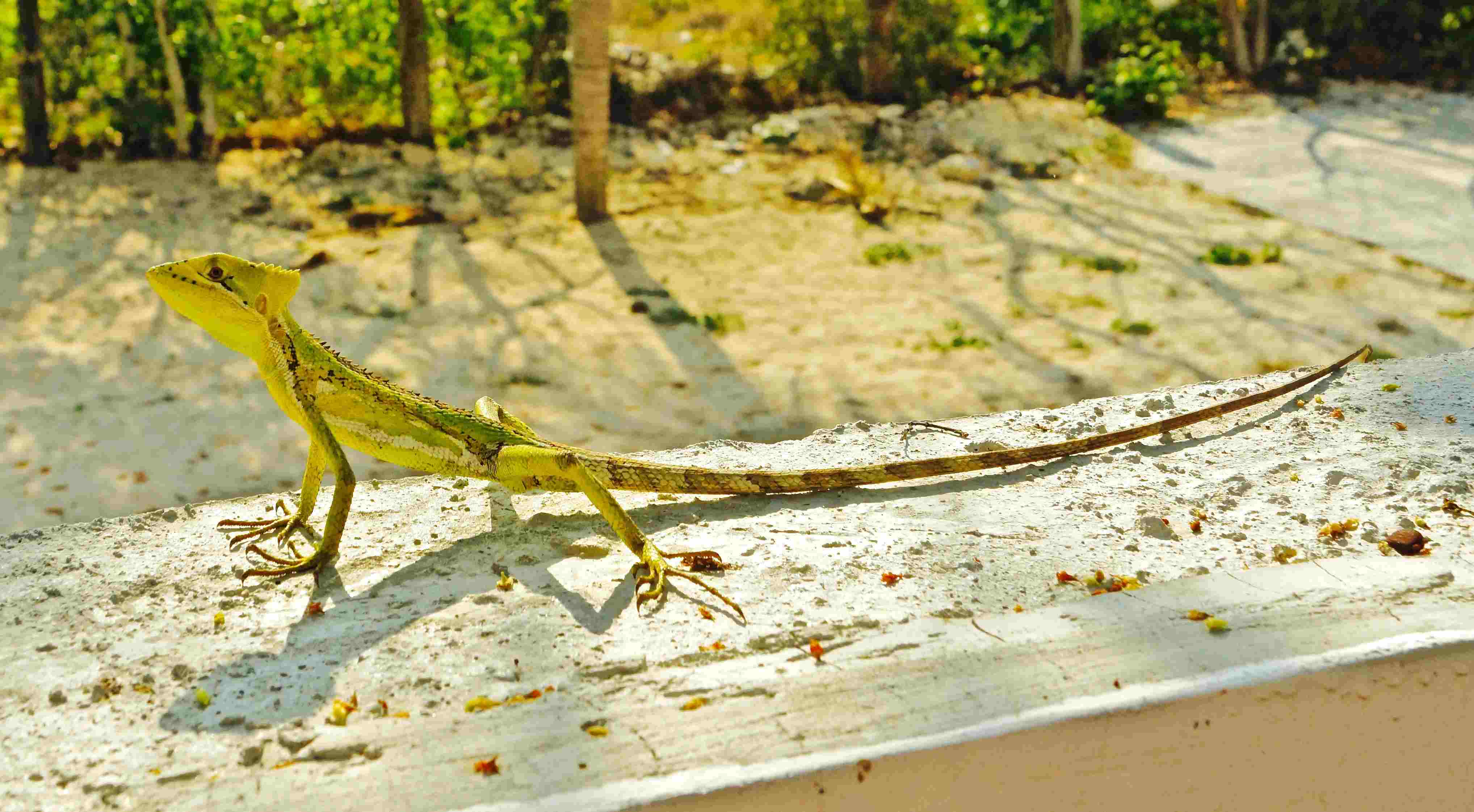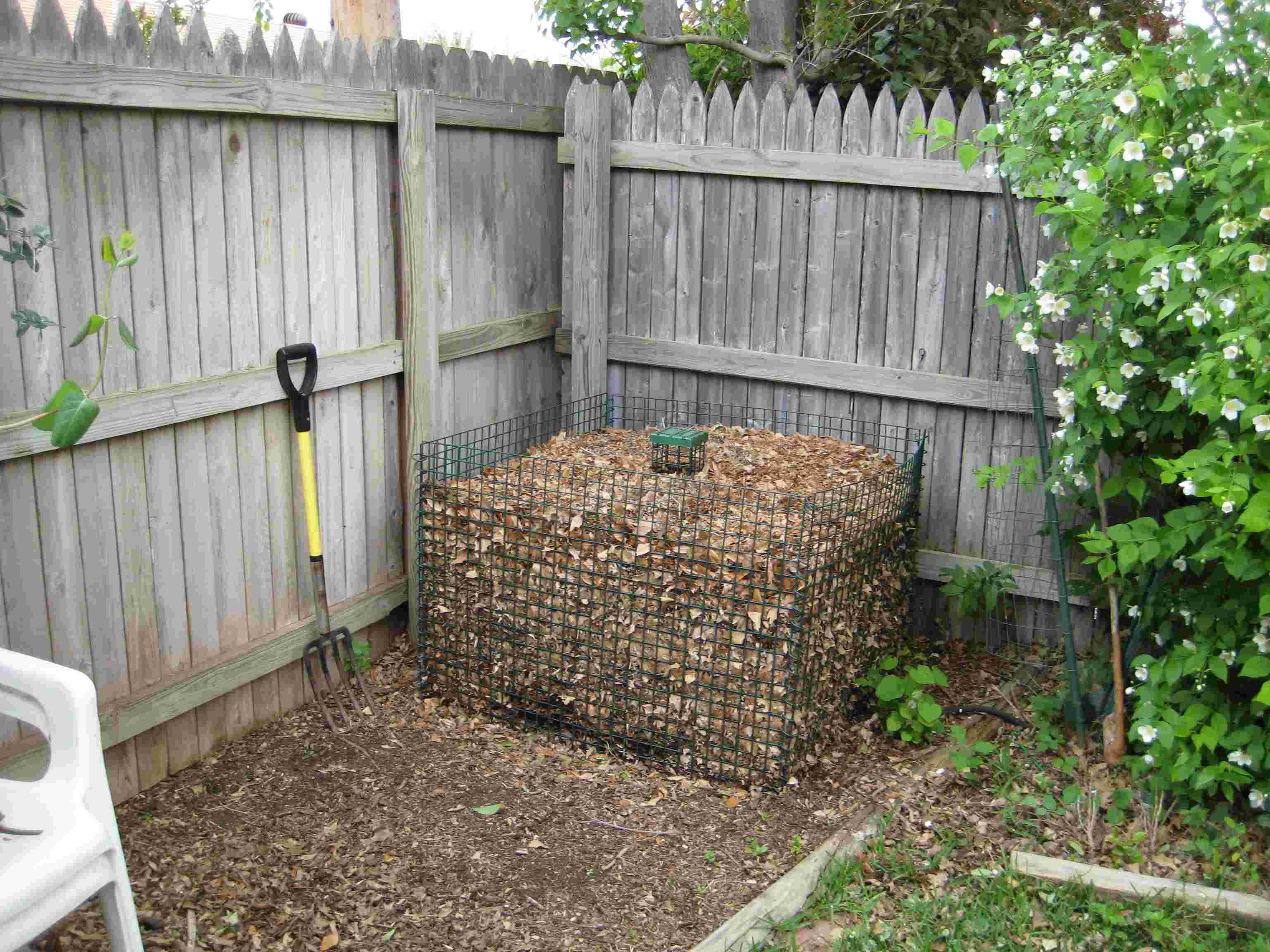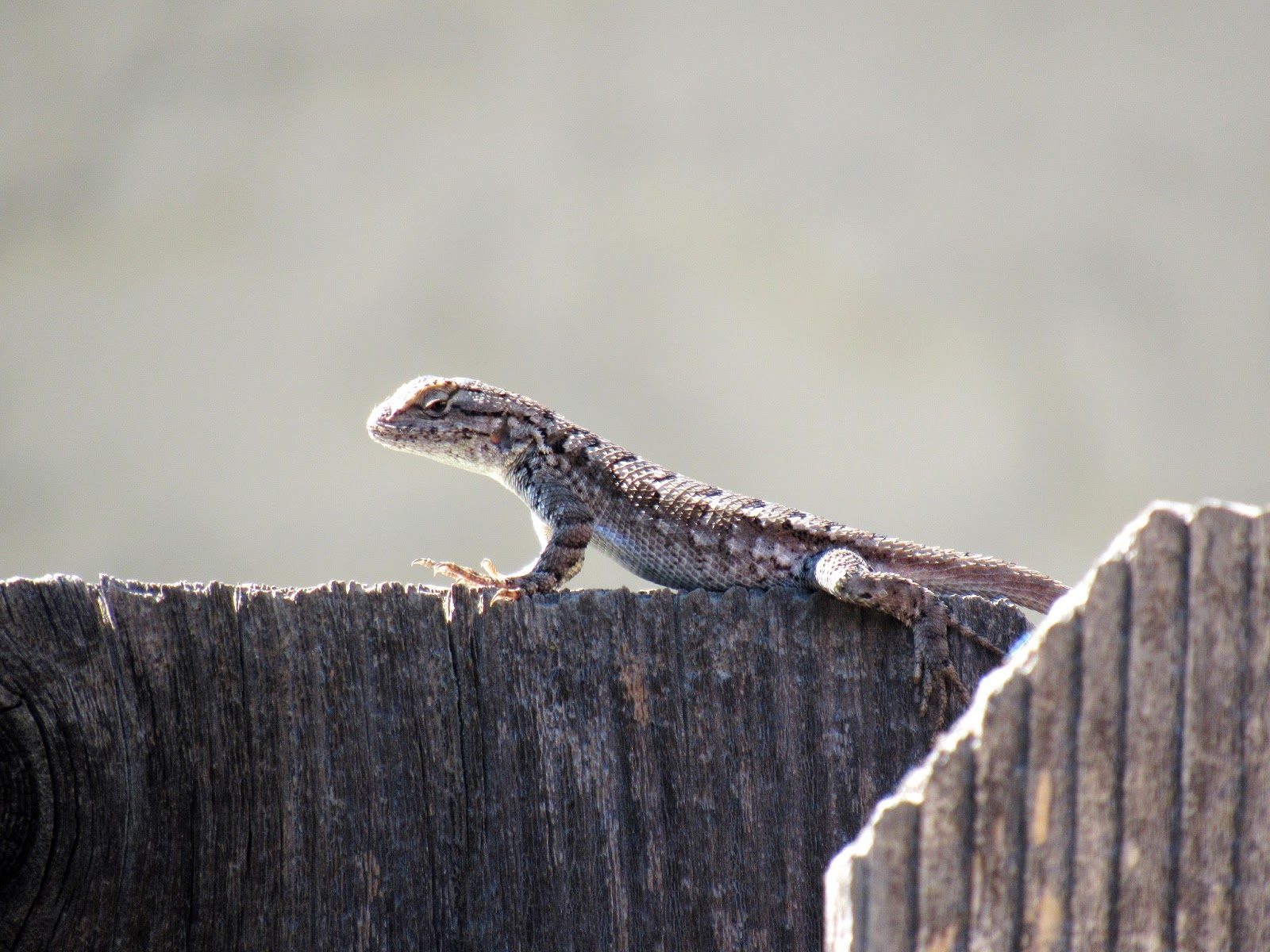Home>Gardening Tips and Tricks>Eco-Friendly Gardening>Where To Find Lizards In Your Backyard


Eco-Friendly Gardening
Where To Find Lizards In Your Backyard
Modified: January 22, 2024
Discover eco-friendly gardening tips to attract lizards to your backyard. Learn where to find these fascinating creatures and create a thriving habitat for them.
(Many of the links in this article redirect to a specific reviewed product. Your purchase of these products through affiliate links helps to generate commission for Chicagolandgardening.com, at no extra cost. Learn more)
Table of Contents
- Introduction
- Creating a Welcoming Habitat
- Identifying Common Lizard Species
- Searching for Lizards in Sunny Spots
- Checking Under Rocks and Logs
- Exploring Vegetation and Low-Lying Plants
- Observing Lizards Near Water Sources
- Attracting Lizards with Food and Shelter
- Providing Ideal Conditions for Lizards
- Conclusion
Introduction
Welcome to the fascinating world of eco-friendly gardening! In today’s fast-paced and environmentally conscious society, more and more people are embracing sustainable practices, including creating their own eco-friendly gardens. Not only do these gardens help reduce our carbon footprint, but they also provide a sanctuary for various wildlife, including lizards.
Lizards are fascinating creatures that play an important role in the ecosystem. They help control insect populations, pollinate flowers, and disperse seeds, making them valuable allies in maintaining a healthy garden. If you’re interested in attracting these scaly visitors to your backyard, there are a few simple steps you can take to create a welcoming habitat.
This article will guide you through the process of transforming your garden into a lizard-friendly haven. We’ll discuss how to identify common lizard species, where to find them, and how to provide the necessary elements they need to thrive. So, put on your gardening gloves and get ready to embark on an exciting journey into the world of eco-friendly gardening and lizard spotting!
Creating a Welcoming Habitat
Creating a welcoming habitat for lizards in your backyard involves considering the specific needs of these reptiles. By providing them with the right conditions and resources, you can increase the chances of attracting a diverse range of lizard species. Here are some tips to help you create an ideal habitat:
1. Diverse Vegetation: Lizards thrive in areas with a variety of plants and vegetation. Aim to create a diverse landscape by incorporating different types of trees, shrubs, and groundcover. This will provide lizards with plenty of hiding spots, basking spots, and foraging opportunities.
2. Rock Piles and Logs: Lizards love to hide under rocks and logs, as these structures provide them with protection from predators and the elements. By strategically placing rock piles and logs around your garden, you can create cozy hiding spots for lizards to retreat to when needed.
3. Sunning Areas: Lizards are ectothermic creatures, meaning they rely on external sources of heat to regulate their body temperature. By providing sunny areas in your garden, such as open spaces or exposed rocks, you’re giving lizards a chance to bask in the sun and warm up their bodies.
4. Water Sources: Like all living beings, lizards need water to survive. Create a water feature in your garden, such as a shallow pond or a birdbath, to provide lizards with a regular water source. Ideally, these water sources should be easily accessible and shallow to prevent any accidents.
5. Avoid Chemicals: Lizards are highly sensitive to chemicals, so it’s important to use organic and eco-friendly products in your garden. Avoid the use of pesticides, herbicides, and chemical fertilizers that can harm lizards and disrupt their natural habitat.
6. Pesticide-Free Insect Population: Lizards primarily feed on insects, so it’s essential to maintain a healthy and abundant insect population in your garden. Avoid using chemical pesticides that can harm both insects and lizards. Instead, encourage natural pest control methods, such as attracting beneficial insects and practicing companion planting.
By implementing these strategies, you can create an inviting environment for lizards to thrive in your backyard. Remember, providing a suitable habitat goes beyond just attracting lizards; it also promotes a balanced and sustainable ecosystem in your garden.
Identifying Common Lizard Species
Before you can start searching for lizards in your backyard, it’s helpful to familiarize yourself with some common lizard species that you may encounter. Here are a few of the most prevalent lizard species you might find:
1. Western Fence Lizard (Sceloporus occidentalis): This common lizard species is found throughout western North America. It has a distinctive blue belly and can often be seen basking on rocks or walls.
2. Eastern Fence Lizard (Sceloporus undulatus): Similar in appearance to the Western Fence Lizard, the Eastern Fence Lizard is found in the eastern part of North America. It has a rough, brown or gray body with dark markings and a blue throat patch.
3. Anole Lizards (Anolis spp.): Anole lizards are known for their ability to change color, depending on their mood and environment. Green anoles are common in the southeastern United States, while the brown anole is an invasive species often found in Florida.
4. Skinks (Family Scincidae): Skinks are a diverse group of lizards that are found worldwide. They have smooth, shiny scales and typically have long bodies and tails. In the United States, the Common Five-lined Skink (Plestiodon fasciatus) is a well-known species.
5. Alligator Lizard (Elgaria coerulea): Alligator lizards are named for their rough, scaly skin that resembles an alligator’s hide. They are primarily found in the western United States and have a strong preference for wooded areas.
6. Mediterranean House Gecko (Hemidactylus turcicus): This non-native species has adapted well to human-made structures and is often found in warm climates, such as Florida and the southern states.
Remember that these are just a few examples of the many lizard species that exist. Each species has its own unique characteristics and habitat preferences. It’s always helpful to consult a field guide or do some research specific to your region to better identify the species you encounter in your backyard.
Now that you have a basic understanding of some common lizard species, you’re ready to start searching for these fascinating creatures in your backyard. Let’s dive into the different areas and techniques you can use to spot lizards in their natural habitat.
Searching for Lizards in Sunny Spots
When it comes to spotting lizards, sunny spots are often the best places to start your search. Lizards are ectothermic, meaning they rely on external sources of heat to regulate their body temperature. As a result, they are more active when the sun is shining and the temperatures are warm. Here are some tips for searching for lizards in sunny spots:
1. Observe Open Areas: Lizards love to bask in the sun, so look for open areas in your backyard where they can soak up the warmth. These may include bare patches of ground, flat rocks, or walls that receive direct sunlight.
2. Time Your Search: Lizards are most active during the warmest parts of the day, typically in the morning and late afternoon. Plan your search accordingly to increase your chances of spotting them.
3. Stay Still and Be Patient: Once you’ve identified a sunny spot, find a comfortable vantage point and stay still. Lizards can be skittish and may retreat if they sense movement or feel threatened. The key is to be patient and give them time to become comfortable with your presence.
4. Scan for Movement: Keep a keen eye out for any movement within the sunny areas. Lizards can blend in with their surroundings, so it may take some time to spot them. Look for slight movements or the flickering of their tails.
5. Use Binoculars: Binoculars can be a helpful tool to get a closer look at lizards in distant sunny spots. They allow you to observe their behavior without getting too close, which could startle them.
6. Take Note of Lizard Behavior: When you spot a lizard in a sunny spot, observe its behavior. Is it basking, hunting, or moving to a new location? This will not only enhance your lizard-spotting skills but also provide valuable insights into their daily activities.
Remember, lizards are masters of camouflage, so keep an eye out for their subtle movements and blending colors. A patient and observant approach will increase your chances of spotting these elusive creatures in sunny spots around your garden.
Checking Under Rocks and Logs
When it comes to searching for lizards, checking under rocks and logs is a tried-and-true method. Lizards are known to seek shelter and hide under these natural structures, providing them with protection from predators and harsh weather conditions. Here are some tips for checking under rocks and logs to find lizards:
1. Lift Rocks and Logs Carefully: Approach rocks and logs slowly and gently lift them, being mindful not to injure any creatures that may be hiding underneath. Use your hands or a tool such as a garden trowel to carefully lift or roll these objects.
2. Wear Protective Gloves: Some species of lizards may bite if they feel threatened or cornered. To protect yourself, consider wearing thick protective gloves when searching under rocks and logs.
3. Take Precautions with Venomous Creatures: Depending on your location, there may be venomous creatures, such as spiders or snakes, that inhabit the same areas as lizards. Be cautious and avoid any potentially dangerous encounters.
4. Avoid Disturbing Natural Habitat: While searching under rocks and logs, be mindful not to disturb the natural habitat of lizards and other wildlife. Place the objects back in their original positions after inspection. Preserve the ecosystem for the creatures that depend on it.
5. Use a Flashlight: If you’re searching for lizards during low-light conditions or in areas with limited visibility, use a flashlight to illuminate the space under rocks and logs. This will help you spot any hidden lizards more easily.
6. Watch for Signs of Lizard Activity: Look for indications that lizards have been using certain rocks or logs as their hiding spots. These signs may include droppings, tracks, shed skin, or disturbed surroundings.
Checking under rocks and logs provides you with a glimpse into the hidden world of lizards. It’s important to approach this activity with respect for their natural habitat and the creatures that call it home. By using these techniques, you’ll increase your chances of finding lizards in their cozy retreats.
Exploring Vegetation and Low-Lying Plants
When it comes to searching for lizards, exploring vegetation and low-lying plants can be very rewarding. Lizards often use these areas for shelter, hiding, and hunting for food. Here are some tips for exploring vegetation and low-lying plants to find lizards:
1. Look for Dense Vegetation: Lizards love to hide and take cover in dense vegetation, such as shrubs, bushes, and tall grasses. These areas provide them with protection from predators and ample hiding spots. Explore these areas carefully, and be on the lookout for movement or rustling leaves.
2. Check Groundcover and Leaf Litter: Lizards may also seek shelter in groundcover and leaf litter, especially in wooded areas. Carefully lift layers of fallen leaves, twigs, and debris to check for lizards hiding within.
3. Observe Potted Plants and Garden Beds: Lizards are often attracted to potted plants and garden beds, as they provide a diverse range of hiding spots and potential food sources. Check these areas carefully, being mindful not to disrupt any nests or eggs that may be present.
4. Pay Attention to Plant Movement: As you explore vegetation and low-lying plants, keep an eye out for subtle movement or rustling leaves. Lizards may be camouflaged, but their small movements can give away their presence.
5. Use a Hand Mirror or Smartphone Camera: If you’re having trouble spotting lizards among the dense vegetation, try using a hand mirror or the camera on your smartphone. Angle the mirror or camera to get a better view of hard-to-reach areas and obscured hiding spots.
6. Provide Lizard-Friendly Plants: To attract lizards to your garden, consider including plants that provide them with food, shelter, and hiding spots. Native plants, such as ornamental grasses, flowering shrubs, and groundcover, are excellent choices that support local wildlife and biodiversity.
Exploring vegetation and low-lying plants allows you to discover the hidden world of lizards within your garden. With some patience, observation, and respect for their habitat, you’ll have a greater chance of spotting these fascinating creatures in their natural surroundings.
Observing Lizards Near Water Sources
Water is essential for the survival of all living beings, including lizards. Therefore, observing lizards near water sources is a great way to increase your chances of spotting these fascinating creatures. Here are some tips for observing lizards near water sources:
1. Identify Water Sources: Before you start your observation, identify the water sources in your garden or nearby natural areas. These may include ponds, streams, birdbaths, fountains, or even rainwater collection areas.
2. Be Patient and Observant: Find a comfortable spot near the water source and be patient. Lizards can be cautious and may take some time to approach water sources, especially if they sense any disturbances or predators nearby.
3. Stay Still and Quiet: Lizards are sensitive to movement and noise. To avoid scaring them away, maintain a still and quiet presence while observing near the water source. Use binoculars to get a closer look without getting too close and causing disruption.
4. Look for Sunning and Drinking Behavior: Lizards may use water sources not only for hydration but also for basking in the sun. Look for lizards sunning themselves near the water or approaching it to drink. These behaviors are more likely to occur during the warmer parts of the day.
5. Use Natural Hides or Perches: Place natural hides, such as rocks or logs, near the water source to provide lizards with safe places to rest and observe their surroundings. Additionally, consider adding perches, such as branches or small platforms, to encourage lizards to come closer to the water source.
6. Ensure Safety for Lizards: It’s essential to make the water source safe for lizards to access. Create gentle slopes or add rocks to provide easy entry and exit points. Ensure that the water is not too deep or too cold, as this could be detrimental to lizards’ well-being.
By observing lizards near water sources, you can witness their fascinating behaviors and interactions. Remember to respect their space and not disturb the ecosystem around the water source. With patience and attentive observation, you’ll have a greater chance of witnessing these mesmerizing creatures in their natural habitat.
Attracting Lizards with Food and Shelter
If you want to attract lizards to your garden, providing them with food and shelter is essential. By creating a favorable environment and offering suitable resources, you can increase the likelihood of lizards making your garden their home. Here are some tips for attracting lizards with food and shelter:
1. Plant Native Vegetation: Native plants attract insects, which are a primary food source for lizards. Include a variety of native shrubs, flowers, and grasses in your garden to create a diverse and abundant insect population.
2. Install Lizard-Friendly Structures: Incorporate lizard-friendly structures such as rock piles, log piles, or brush piles in your garden. These structures provide lizards with shelter, hiding spots, and a place to lay their eggs.
3. Provide Sunning and Basking Spots: Lizards need access to sunny areas to regulate their body temperature. Create open spaces or introduce flat rocks and low branches where lizards can bask in the sun.
4. Create a Water Source: Lizards require water for drinking and bathing. Set up a shallow birdbath or small pond in your garden to provide them with a reliable water source. Remember to keep the water source clean and replenish it regularly.
5. Introduce Lizard-Friendly Plants: Certain plants can attract lizards due to their structure or nectar production. Examples include plants with low, dense foliage, such as succulents or low-growing shrubs, as well as those that produce nectar-rich flowers, like lantanas or salvias.
6. Avoid Chemicals and Pesticides: Use organic gardening practices and avoid the use of pesticides and chemicals in your garden. Lizards are highly sensitive to these substances, and their presence can deter or harm them.
7. Maintain a Balance: Aim for a balanced ecosystem by attracting a variety of beneficial insects and creating habitats for lizards’ natural prey. This will ensure a steady food source for the lizards and enhance their chances of thriving in your garden.
By providing a suitable habitat with food and shelter, you can make your garden an enticing haven for lizards. Remember to be patient, as it may take some time for the lizards to discover and make use of the resources you’ve provided. With persistence and the right environmental conditions, you’ll soon have the pleasure of observing these charismatic reptiles in your own backyard.
Providing Ideal Conditions for Lizards
Creating and maintaining ideal conditions is key to attracting and supporting a thriving lizard population in your garden. By understanding their needs and providing the necessary elements, you can ensure a favorable environment for these fascinating creatures. Here are some tips for providing ideal conditions for lizards:
1. Maintain Optimal Temperature: Lizards are ectothermic, meaning they rely on external sources of heat to regulate their body temperature. Ensure you have a range of sunny and shaded areas in your garden to allow lizards to regulate their temperature throughout the day, especially during hot weather.
2. Create Hiding Places: Lizards need safe hiding places to feel secure. Use a mix of vegetation, rocks, logs, and other natural materials to create a diverse range of hiding spots throughout your garden. These sheltered areas will provide lizards with protection from predators and harsh weather conditions.
3. Offer Suitable Substrates: Lizards prefer substrates that allow them to easily move, dig, and burrow. Provide areas of loose soil, sand, or leaf litter where lizards can explore and construct burrows. This will allow them to feel more at home in your garden.
4. Maintain a Varied Diet: Lizards have different dietary preferences depending on their species. To support their nutritional needs, encourage a diverse insect population in your garden. This can be achieved by planting native vegetation that attracts a wide range of insects, ensuring a varied and abundant food supply for lizards.
5. Minimize Predators: Take steps to minimize the presence of predators in your garden. This can include keeping cats indoors, installing fences or barriers, and removing any potential shelters that may harbor predators. A predator-free environment will reduce stress levels for lizards and increase their chances of survival.
6. Provide Water Sources: Lizards need access to fresh water for drinking and bathing. Place shallow dishes or saucers with clean water around your garden, ensuring they are easily accessible and replenished regularly. This will help sustain lizards and support their overall health.
7. Avoid Harmful Chemicals: Lizards are highly sensitive to chemicals, so avoid using chemical pesticides, herbicides, or fertilizers in your garden. Opt for organic and environmentally friendly alternatives to protect the lizards and maintain a healthy ecosystem.
By providing ideal conditions, you create an inviting and supportive habitat for lizards. The presence of suitable temperature zones, hiding spots, natural substrates, varied diets, and water sources will attract these reptiles to your garden and contribute to their overall well-being.
Conclusion
Creating an eco-friendly garden that attracts and supports a thriving lizard population is a rewarding endeavor. By implementing the tips and strategies mentioned in this article, you can transform your garden into a haven for these fascinating creatures while promoting a sustainable and balanced ecosystem.
Remember to provide a welcoming habitat by incorporating diverse vegetation, offering hiding spots under rocks and logs, and creating sunny areas for lizards to bask. Additionally, ensure access to water sources and maintain a pesticide-free environment to protect against any harm to lizards.
Identifying common lizard species and understanding their behaviors will aid in your lizard-spotting adventures. Whether you observe them near water sources, in sunny spots, or within vegetation, patience and keen observation will enhance your chances of glimpsing these captivating reptiles.
By attracting lizards with food and shelter and providing optimal conditions, you not only invite these remarkable creatures into your garden but also support their well-being and contribute to the overall biodiversity of your surroundings.
So, embrace the world of eco-friendly gardening and embark on a journey to create a vibrant and inviting space where lizards can thrive. The joy of observing these scaly visitors in your own backyard is sure to inspire awe and appreciation for the wonders of nature.










